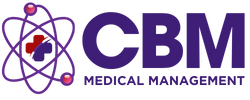# Understanding Billing with Diagnosis: A Guide
Navigating the complexities of medical billing can be a daunting task for both healthcare providers and patients. Central to this process is the concept of billing with diagnosis—a method that ensures services are billed accurately according to the medical diagnosis. This guide aims to demystify the relationship between diagnosis and billing, providing a comprehensive overview to help you understand the intricacies involved.
## The Basics of Medical Billing and Diagnosis
### What is Medical Billing?
Medical billing is the process of submitting and following up on claims with health insurance companies to receive payment for services rendered by healthcare providers. This process encompasses a vast array of services and procedures, from routine check-ups to complex surgeries.
### The Role of Diagnosis
A diagnosis refers to the identification of a disease or condition based on its signs and symptoms. In the context of billing, the diagnosis is crucial as it justifies the medical necessity of the treatments provided. Each diagnosis is matched with a specific code, derived from standardized coding systems such as the International Classification of Diseases (ICD) or the Diagnostic and Statistical Manual of Mental Disorders (DSM) for psychiatric diagnoses.
## Coding Systems Explained
### ICD Codes
ICD codes, currently in the 10th edition as ICD-10, are used globally to standardize the classification of diseases. These codes are essential for billing as they provide a detailed description of the patient’s diagnosis, enabling healthcare providers to bill accurately and efficiently for their services. The transition from ICD-9 to ICD-10 expanded the number of codes significantly, allowing for greater specificity in diagnosis coding.
### CPT and HCPCS Codes
While ICD codes are used for diagnoses, Current Procedural Terminology (CPT) and Healthcare Common Procedure Coding System (HCPCS) codes are employed to describe the procedures and services rendered. These codes are vital for billing purposes, as they are matched with ICD codes to validate that the services provided were necessary for the management of the patient’s condition.
## The Impact of Accurate Diagnosis Coding
### For Healthcare Providers
Accurate diagnosis coding is paramount for healthcare providers. It impacts reimbursement, as incorrect codes can lead to denied claims or underpayment. Moreover, accurate coding is essential for maintaining compliance with healthcare regulations and avoiding potential audits and penalties.
### For Patients
For patients, accurate diagnosis and procedural coding ensure that their insurance coverage is correctly applied, potentially avoiding unexpected out-of-pocket expenses. Furthermore, it contributes to the overall quality of care, as accurate data allows for better treatment outcomes and healthcare analytics.
## Challenges and Best Practices
Despite its importance, billing with diagnosis presents several challenges. Keeping up-to-date with coding updates, managing discrepancies between clinical documentation and billing codes, and ensuring compliance with payer-specific requirements are among the most significant hurdles.
### Best Practices for Success
– **Continuing Education:** Healthcare professionals should engage in ongoing education on coding standards and insurance regulations to stay abreast of changes.
– **Consistent Documentation:** Maintaining detailed and accurate clinical documentation supports appropriate coding and billing.
– **Regular Audits:** Conducting internal or external audits can identify coding errors and areas for improvement, helping to mitigate compliance risks.
– **Collaboration:** Effective communication and collaboration between healthcare providers, coders, and billing specialists are essential for resolving coding and billing issues efficiently.
## Conclusion
Understanding the nuances of billing with diagnosis is crucial for the smooth operation of healthcare services. By grasitating the importance of accurate diagnosis coding and adhering to best practices, healthcare providers and patients can navigate the complexities of medical billing more effectively. As the healthcare landscape continues to evolve, fostering a comprehensive understanding of these processes remains essential for ensuring financial sustainability and high-quality patient care.

